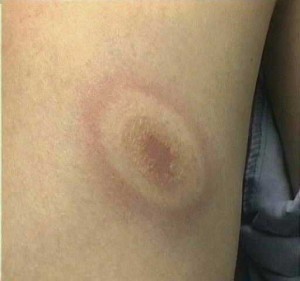What Causes Purple Lips?
Purple lips also know as Cyanosis is a medical condition that causes discoloration and bluing of the skin and membranes. Linked to lack of oxygen, cyanosis may be attributed to underlying lung or breathing problems. Often seen in infants with birth defects or lung problems, cyanosis also affects the elderly. Although human blood is always a shade of red, the optical properties of skin distort the dark red color of deoxygenated blood to make it appear bluish purple.
Cyanosis can occur in the fingers, including underneath the fingernails, as well as other extremities (called peripheral cyanosis), or in the lips and tongue (central cyanosis).
Central cyanosis is often due to a circulatory or ventilatory problem that leads to poor blood oxygenation in the lungs or greater oxygen extraction due to slowing down of blood circulation in the skin’s blood vessels.
Acute cyanosis can be a result of asphyxiation or choking, and is one of the surest signs that respiration is being blocked.
Common causes
- Abnormal hemoglobin levels
- Bronchospasm
- Congenital heart disease
- Heart failure
- Heart valve disease
- High altitude
- Hypothermia
- Hypoventilation
- Lung disease
- Myocardial infarction
- Polycythaemia
- Pulmonary embolis
- COPD (emphysema and chronic bronchitis)
- Asthma
- Methemoglobinemia
- Tetralogy of Fallot
- Right to left shunts in heart or great vessels
Peripheral cyanosis is the blue tint in fingers or extremities, due to inadequate circulation. The blood reaching the extremities is not oxygen rich and when viewed through the skin a combination of factors can lead to the appearance of a blue color. All factors contributing to central cyanosis can also cause peripheral symptoms to appear, however, peripheral cyanosis can be observed without there being heart or lung failures. Small blood vessels may be restricted and can be treated by increasing the normal oxygenation level of the blood.
Common causes
- All common causes of central cyanosis
- Arterial obstruction
- Cold exposure (due to vasoconstriction)
- Raynaud’s phenomenon (vasoconstriction)
- Reduced cardiac output (e.g. heart failure, hypovolaemia)
- Vasoconstriction
- Venous obstruction (e.g. deep vein thrombosis
Unless the cause of bluing lips can be attributed to cold or frigid temperatures, it is important to seek immediate medical attention and diagnosis to rule out any of these serious conditions.
Bluish skin (cyanosis) can be a sign of many serious medical problems and should be taken seriously.
For adults, call your doctor if you have bluish purple lips or skin and:
- Your breathing is getting harder, faster, or you cannot get a deep breath.
- You need to lean forward when sitting.
- You are using muscles around the ribs more.
- You have chest pain.
- You are having headaches more often than usual.
- You feel sleepy or confused.
- You have a fever.
- You are coughing up dark mucus.
For children, call the doctor if your child has bluish purple lips or skin and:
- Is having a hard time breathing
- The child’s chest muscles are pulling in with each breath
- Is breathing faster than 50 to 60 breaths per minute (when not crying)
- Is making a grunting noise
- Is sitting with shoulders hunched over
- Is very tired
- Is not moving around very much
- Has a limp or floppy body
- The nostrils are flaring out when the child breathes
- Loses his or her appetite
- Is irritable
- Has trouble sleeping
For more information on What Causes Purple Lips read:






